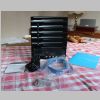 T
T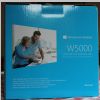 he parcel having survived the experience of being left out in the rain by the UPS delivery driver I took possesion of the Thecus W5000 just over a week ago. The packaging looks like it was put together by the Microsoft marketing department, although inside the only flags are a similarly badged, and virtually useless, installation guide and the words Windows Storage Server, with 2012 R2 Essentials in smaller lettering, on the front panel of the device.
he parcel having survived the experience of being left out in the rain by the UPS delivery driver I took possesion of the Thecus W5000 just over a week ago. The packaging looks like it was put together by the Microsoft marketing department, although inside the only flags are a similarly badged, and virtually useless, installation guide and the words Windows Storage Server, with 2012 R2 Essentials in smaller lettering, on the front panel of the device.
The installation guide walks you through the obvious initial stages of setting the W5000 up - plugging in mouse, keyboard and screen (no mention of network cable or power, with the latter made more difficult by the supplied kettle lead being fitted with a European rather than a UK plug) before turning it on. It then has a handful of screenshots of the initial setup screens, with minimal text describing the responses required, and ends with the statement 'Please find more information at http://WSS.thecus.com' which is all well and good were that site to contain a PDF or two describing what happens next, but I could not find anything useful pertaining to the configuration, just a couple of handfuls of FAQ entries and a marketing flyer. Hopefully that will change, but for now - like me - you are on your own with whatever guidance you can find on the web (which I guess is why I'm writing this).
One thing the guide most certainly doesn't tell you is whether you should install hard disks into the drive bays before performing the initial setup, or not. Since the base device apparently has a 500GB hybrid drive I decided to go with not doing so, so bear that it mind if reading the rest of these posts as advice and guidance for your own setup.
One other complaint is that I don't find it easy to close the front panel properly, you have to very precise about where you push in order for it click into place. Opening it again is not so difficult. The front of the unit behind the panel contains five drive trays, and again there is no information anywhere on how you should orient or secure the drives, so if you've never done that kind of thing before, I hope the pictures below will help.
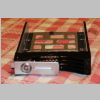
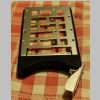
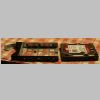
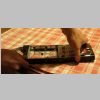
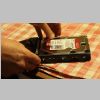
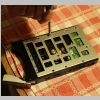
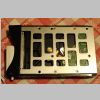
Since it has taken me rather longer than I anticipated to get this second post up on JoeUser, I'm also going to jump ahead and say that I've also been noticing that the system is quite noisy, certainly compared to either the existing D-Link DNS323 NAS or to my passively cooled Dino Core i5 box (which is pretty much silent). Not a big deal when the gaming rig is on, because that is noisier than everything else lumped together, but very noticeable when I turn everything else off for the night (or day at work).
I also remain less than impressed by Thecus' support for this box - there is still no meaningful documentation on the wss.thecus.com pages, nor any indication of how to obtain technical support should you need it. Furthermore the main Thecus pages trumpet an Official Forum under the Support drop down, but the W series sub-forums were empty when I first looked at them last weekend and remain so, other than an unanswered question from me about documentation, as I come to post this.
Next installment should be up within a couple of days and detail my experience of the initial setup and configuration process.